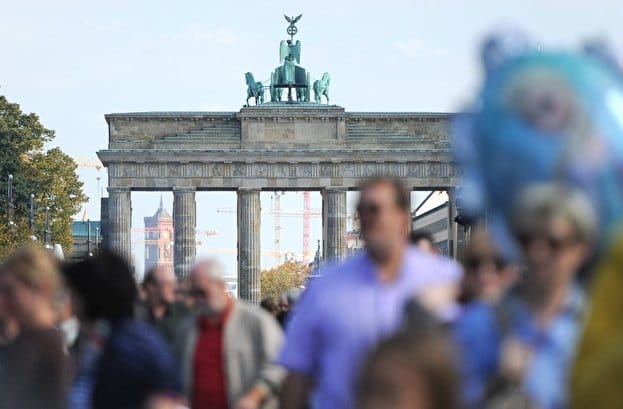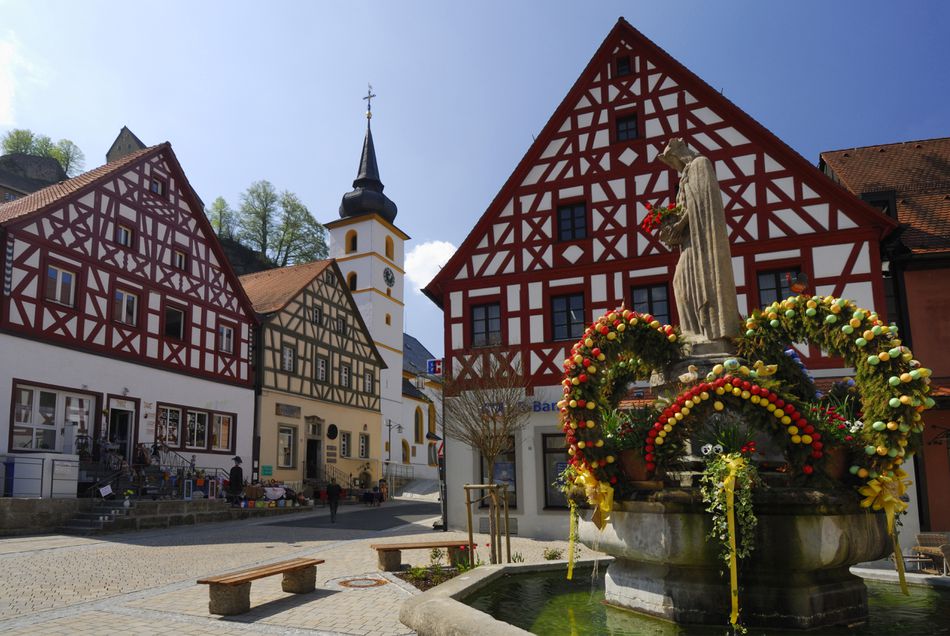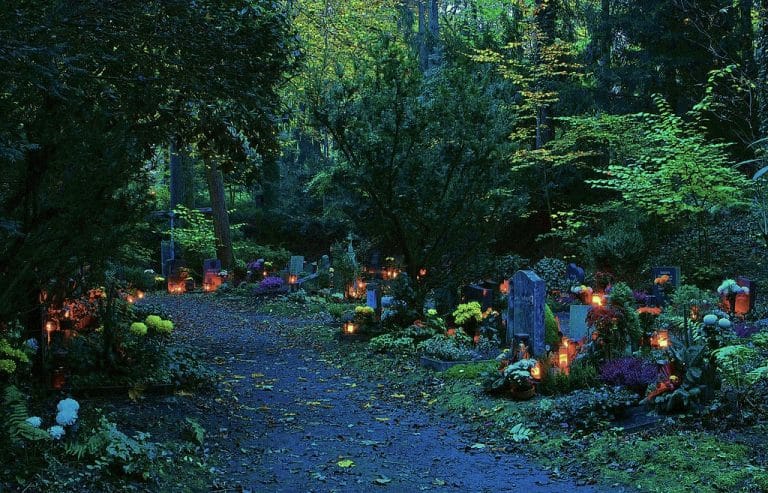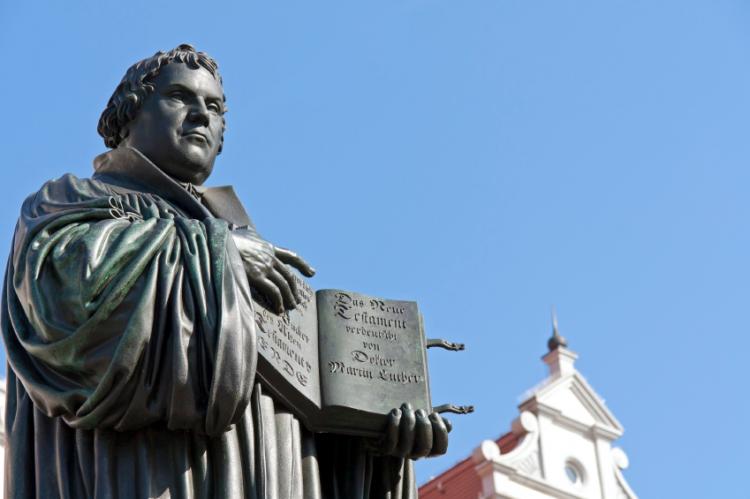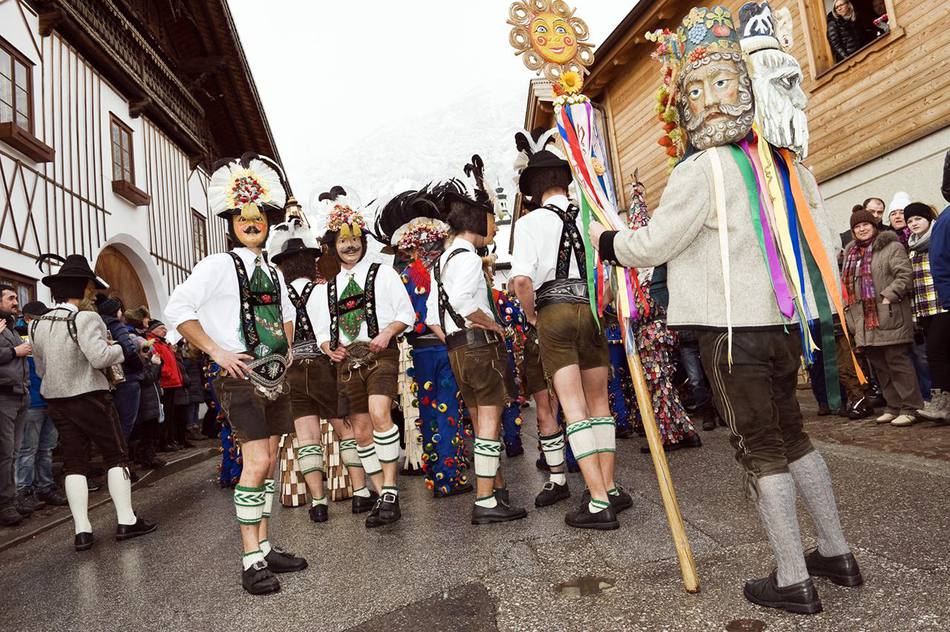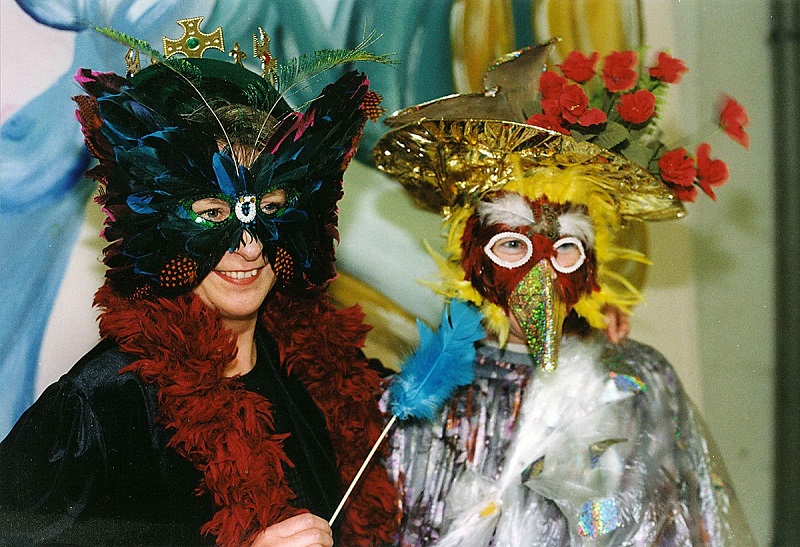- German traditions deeply influence global customs, layered over centuries to shape a rich, proud national culture.
- Day of German Unity (Oct 3) celebrates reunification with festivals, speeches, fireworks, and national togetherness.
- Christmas traditions include Advent wreaths, Christkindlmarkts, Sankt Nikolaus, and artisanal tree and candle customs.
- Easter and All Saints Day feature decorated eggs, markets, family gatherings, candle lighting, and reverent remembrance of the dead.
- Festivals like Oktoberfest and Karneval showcase communal joy, music, costumes, beer tents, parades, and longstanding cultural celebration.
German Traditions Inspired the Traditions of Many
Germany has a personal touch around every corner. Furthermore, many of the other countries and cultures around the world have gotten their traditions from the inspiration found in German traditions. Visiting this country is like looking up at a mountain. German traditions were built up by year upon year, layer upon layer, tradition upon tradition, to become what it is today. A beautiful and thriving country with a rich and deep, sometimes painful, but in all ways beautiful culture and nation. Come dig into some of the most beloved German traditions with me!
Patriotic Traditions:
1. Day of German Unity (Tag der Deutschen Einheit)
The Day of German Unity, created in 1990, is the only federal holiday that exists in this country. It is a celebration of the reunification of the East and the West of Germany. The event that fueled this was the fall of the Berlin wall which led to this reunification of Germany not even a year later.
This day is celebrated with a three day festival around the Brandenburg Gate. On the night of October 3rd, there is a concert held taking place in the Platz der Republik. The headline phrase for this three-day festival is “Only With You” which is a sweet sentiment. Large crowds of travelers from all over come to this festival each year. Politicians and German leaders speak, fireworks go off, and the people enjoy their off day from school and work. All over the nation people are eating, drinking, and being merry together as they celebrate their united country.
Holiday Traditions:
2. Christmas (Weihnachten)
Credit: Judith Salecich
Much like how Christmas is celebrated by many in the states, the German celebration begins on advent up until Christmas day. One tradition of some German families is making a wreath (der Adventskranz in German) and the purpose of this decoration is to house candles. The Germans are also known for placing candles on their Christmas trees to decorate for Christmas. Having evergreens decorated and in the home is actually a German practice that dates back centuries that other countries and cultures have caught onto.
Another celebration by the Germans is Christkindlmarkts, which is basically a Christmas market. This is a tradition that also dates back centuries where towns will set up Christmas markets beginning on the first of advent. Here you can spend a whole day enjoying Christmas music, shopping, hot drinks, and treats with family and friends. The way Christmas is celebrated in Germany is also typically by attending a Christmas Eve service and having a large family meal.
Sankt Nikolaus
Sankt Nikolaus is the symbol of Christmas in Germany. Though the Santa Clause tradition comes from the tradition of Sankt Nikolaus, he is not the same as Santa. He is similar to Santa Clause in that he brings gifts, but this figure is actually based on a real saint. He comes on the 5th/6th of December instead of right before Christmas like Santa. He is said to come dressed as a bishop with a long grey beard and he also takes an inventory of who is naughty and who is nice. Families clean their homes and children get their shoes ready for gifts to be placed into them by polishing them. If the children have been good, they are given money or candy in their shoes. If they are bad, they get tree sticks instead, similar to how Santa would give gifts to the good and coal to the bad.
The tradition holds that Krampus is an animal or beast like figure who comes along with Sankt Nikolaus and punishes the children who have been bad. This tradition has been in and out over the years, but it has at times gone so far as to have people dress up as this character and roam around being a humorous figure who attempts to scare children in the area with a costume. Truthfully, the purpose is geared toward humor and not fear. All in all, it is without question that Christmas is taken very seriously in Germany.
3. Easter (Ostern):
Credit: Andreas Strauss
Easter is celebrated just as fiercely as Christmas is in Germany. There are many of the same traditions in Germany for Easter as there are in the states, but many of the traditions followed in the US stem from the German traditions. An interesting tradition here is the way the Germans will keep trees or branches in their homes for Easter which they decorate with colored eggs. Easter eggs are another important symbol in Germany. They are not simply an activity promoted for children, but they are decorated artistically with tea leaves and special paints by artists as well.
Similar to the Christmas markets, Germany also celebrates Easter with markets for this holiday. In these markets you will find impressive Easter eggs decorated with all types of designs by actual Easter egg artists. You will also find books for children and Easter decorations to put up in your home. Everything is shut down from Good Friday until Monday, with the exception Saturday which is a heavy errand day. The holiday is a nice break for families to join together and celebrate. Traveling at this time is the same kind of busy you will find during thanksgiving and Easter in the US. People are trying to get to their loved ones and hotels, roads, places people celebrate, and public transportation is all highly crowded. It is best to plan ahead as far in advance as possible if you will be traveling or out and about during Easter in Germany.
Religious Traditions:
4. All Saints Day (Allerheiligen)
Credit: Juergen Moestl
This is another holiday set aside to celebrate religious tradition. This holiday is similar to Day of the Dead in Mexico, and both are actually celebrated in the month of November. The tradition in Germany of All Saints Day began in Rome when Christians honored the dead such as the saints and the martyred, as well as the Christians who went before them who did good but did not have an official title. The people follow many traditions on this holiday such as attending services on the closest Sunday to this day possible, lighting candles in honor of the dead and visiting grave sites of their deceased loved ones.
Grieving Well
This holiday is known as a silent holiday for obvious reasons in Germany. It is meant to be enjoyed but in a reverent way. This is a good way that the grieving process is actually promoted as it should be for healing for those who have suffered loss while remembering those they loved in a healthy and open way. An interesting tradition for this holiday is the special candle creation called Newweling where multiple candles are wrapped together and dipped in multiple colors to create this beauty. Newweling candles are very pretty but more importantly, they hold a special place in the German tradition for All Saints Day.
The sister holiday and extension of All Saints Day is All Souls Day (Allerseelen) which is also called Commemoration of All the Faithful Departed, where all the souls of all departed Christians are celebrated.
5. Reformation Day
Credit: Christina Hanck
When Martin Luther nailed his 95 theses to the church in Wittenburg, he began a social, cultural, and religious movement that would change the course of history and the future of the church tradition. This public holiday is the annual celebration of a spark that set the world on fire, beginning in Germany.
Martin Luther was a monk who witnessed the corrupt deeds of the Catholic Church and set out to put a stop to it. Back in this day, the church had power as the government does now, so you did not stir the pot. If the church said it, it was law. Luther saw that this was against the true words in the Scripture the Catholic Church claimed to follow and decided he was finished witnessing the church take money for the people in order to fund their projects by manipulation and scare tactics.
When he nailed The 95 Theses to Castle Church's front door on October 31, 1517, a movement began that we know to be the Protestant Reformation. This movement lasted until around 1648. During this time, many new belief systems popped up in the Christian world as frustrated people began to say no more. The Catholic Church's power to determine how the Word of God would be distributed (by mode of abuse) began to lose its power as the people rose up.
Father of Protestantism
Luther goes down in History as the “Father of Protestantism”. The Protestant Reformation was the largest movement since the beginning of the church as we know it, and still to this day. Starting out as a student of law, Luther was capable of creating a good argument. When he left his law studies and become a monk, it was because he believed in this call. But when he witnessed the Catholic Church and the pope of that day essentially selling salvation and abusing the lay people, he went into action.
He argued in his theses and with his life that church tradition was not as important as what the Word of God had to say and that being seen as pure and righteous in the sight of God could not be earned by good deeds or by giving money to the church. If this historical event had not taken place, if there was no call of action for change, it is likely the church would still operate in many of the same ways today.
Not only did Martin Luther help break this culture free of the Catholic Church's abusive traditions, but he also translated the Bible into German so that the lay people who had been blindly following whatever was said by the Catholic Church and the pope could read and study it for themselves and form their own opinions and traditions. Luther gave the liturgy to those who were not biblical scholars so they could understand as well. He also came up against the ban on marriage for the clergy in the church which is yet another rule that does not come from roots of scripture.
Culture Changer
Ultimately, Luther changed a culture of fear and instead made a way for people to gain faith and have more passion and power in their own work and lives and over their own beliefs and actions. Some of the synonyms for Protestant are “nonconformist” and “freethinker”, which are exactly the characteristics of Martin Luther when he nailed his theses to that door hundreds of years ago. This spark set ablaze in Germany has changed the entire world and church for the better by empowering average people, which is how every movement changes things. This is a rich and special tradition as well a tradition of great pride to partake in for the German folk.
Festival Traditions:
6. Oktoberfest
Credit: Franz Aberham
In Munich Germany, they have an annual festival called Oktoberfest. This tradition has been going on since 1810. It is a beer festival with over 34 beer tents. It goes from mid to late September and into the beginning of October. This festival is pretty much just one big party. There is good music playing inside of each tent where the quality beer is sold in festive cups which enhance the event aesthetics. Each vendor has a unique theme and feel that they bring to the festival. There are also rides such as a carousel and a ferris wheel. Rest assured, good food is sold as the companion of the beer.
The tour extends to the outer reaches of Munich. There is plenty for a tourist to see and do around the area of Oktoberfest such as tours and other parties. The word Gemütlichkeit is what the Oktoberfest celebration would be described to visitors as. This word means coziness, friendliness, cheer, and peace. This is what anyone who has attended Oktoberfest will tell you the feel of it is. There are many different packages you can purchase in advance online if you are looking to attend Oktoberfest.
7. Karneval or Fasching
Credit: Ralf Roletschek
Karneval or Fasching find their roots back in medieval times. It is like the Mardi Gras celebration in New Orleans in nature. There are parades, floats subtly (or at times unsubtly) referencing political humor, and tons of music and parties of all kinds. The Rose Monday Floats are the star of the show. Here is where much of the political and current cultural humor comes out. Then those dressed up in fun costumes come into the crowd and entertain those attending in the streets.
Bars remain open late and there is a general sense of fun and excitement in the air that lasts a long while. The festival ends around ten days before Lent and the original purpose of this was to celebrate with good food before fasting season. It is the last hurrah before the somber season is in the air. There are many carnival foods such as donuts, sausages, and pretzels as well as hot drinks to help those attending stay warm. Weiberfastnacht is another interesting event for ladies only to partake in. They dress up and run around the streets taking control of the situation with humor.
The Land of Eternal Culture
Germany has rich traditions that are centuries deep, many of which are rooted in their Roman Catholic and Christian beliefs. You can be sure that all of their ancient traditions are derived from the deep love and passion Germany has for life, family, joy, fun, and beauty. Each of the German traditions has roots so deep into the ground they cannot be perfectly traced back to their origin. German traditions are deeply ingrained into the food they eat, the holidays they celebrate, and even the way they grieve. My hope is that by deepening your understanding of German tradition, you will see the beauty of this nation's culture even more clearly.
Related Article: 15 Fun Facts About Germany


